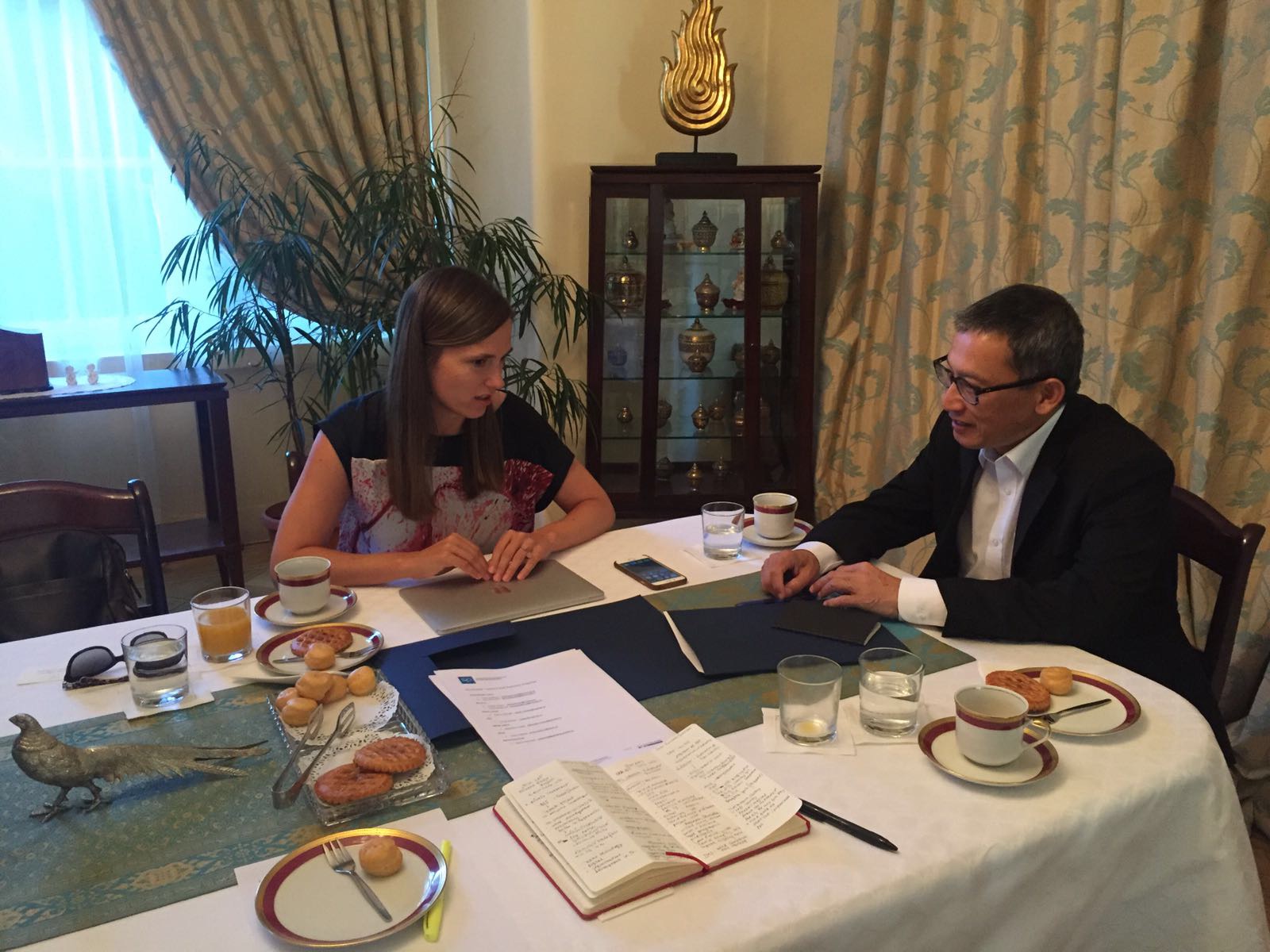If Czech companies want to succeed in Thailand, they have to be visible there

At the end of August the Confederation of Industry of the Czech Republic will accompanies the Deputy Minister of Trade to a business mission to Thailand. We talked about the business opportunities, the Thai market and the official visit to Thailand with the Ambassador of Royal Thai Embassy in Prague, Mr. Narongem Sasitornem.
How do you perceive Czech-Thai business relations? What reputation does the Czech Republic have in Thailand?
Czechoslovakia is synonym for engineering in Thailand. Products from Czechoslovakia were available in Thai markets over hundred years ago and they had good reputation among Thais since then. We also owe historically good relations to King Rama VII, who visited Czechoslovakia in 193245 and recognized its technological potential. He visited many industrial centres and businesses such as Plzen Enterprise, now Škoda Transportation, and Moser Glassworks. It was a very extensive and substantive visit. I think he hads laid the strong foundation for the longstanding friendship and cooperation for our countries
How do you see opportunities for Czech companies to enter to your market?
I would like to emphasize that the Thai market is very open and it has remained so for the past 50 years. If someone has a competitive product, he will succeed in Thailand. Thailand has an open business climate with well-established market environmentFor example, I would like to mention Baťa, which has been able to establish itself on the Thai market, so well that even Thai people often think Baťa is Thai brand. The key to success in Thailand is the need to be visible here. Czech brands and products should be more visible in the Thai markets. You have to bring those topquality products to trade fairs.
Would you therefore recommend to Czech companies wishing to penetrate Thailand?
I see a great opportunity for engineering products that are of high quality. As Thailand is the regional hub of manufacturing industries, there are always demands for machineries and engineering products from Czech Republic. In addition, the Thai government is fastly developing digital infrastructure to ensure digital access for every village. We have 67 million population but almost 90 million cell phone users, a lot of those are smartphones. I believe there is a great opportunity for Czech digital businesses or start-ups in Thailand.
How far is the project Thailand 4.0?
Thailand has made achievements in developing our economy from low income to high middle income country. Thailand 4.0 is aimed at moving us to a high income economy. This is a very comprehensive package. We talk about new industries as new engines of growth – S-Curve: Next generation automotive, smart electronics, medical tourism, biotechnology and food for the future; New S-Curve: robotics, aviation, biofuels, medical hub and digital. But not just about new key industries, Thailand 4.0 also includes education 4.0, infrastructure upgrading and more. And the project “Eastern Economic Corridor” or EEC is the masterpiece of this policy package.
You will be presenting Eastern Economic Corridor to the Czech companies that will be visiting Bangkok in a business mission led by Mr. Hanák, President of the Confederation of Industry and Transport of the Czech Republic. Can you explain what this is about?
It is an investment of $ 43 billion for the next 5 years in infrastructure, digitization, robotics, automotive and other development areas. For example, we plan to build the third international airport for Bangkok and link it to other two airports so that the journey takes between them for a maximum of one hour. For example, we want to build a tram network in Phuket. Infrastructure investments will be enormous and carry great business opportunities.
I see visions and plans are big. How is the economy doing now?
The major advantage of the Thai economy is its stability. Every government is committed to pro market economic policy. At the moment, our economy is growing well, expecting to grow about 3.5-4 percent this year. Exports are picking up, tourism has always been very robust. Private and public investments are also showing a strong momentum. Our macroeconomic position is now very strong, with high foreign reserves (almost $200 billion), low public debt (less than 43 percent of GDP) and low unemployment. Past few years, the numbers might not be very good but I believe we will have good years ahead of us.
Thai Economy (from WorldBank.org)
Thailand became an upper-middle income economy in 2011. Over the last four decades, Thailand has made remarkable progress in social and economic development, moving from a low-income country to an upper-income country in less than a generation. As such, Thailand has been one of the widely cited development success stories, with sustained strong growth and impressive poverty reduction, particularly in the 1980s. However, average growth has slowed to 3.5 percent over 2005-2015. The government has embarked on an ambitious reform program to raise Thailand’s long-term growth path and achieve high-income status.
Thailand’s economy grew at an average annual rate of 7.5 percent in the boom years of 1960 to 1996 and 5 percent following the Asian crisis during 1999-2005, creating millions of jobs that helped pull millions of people out of poverty. Gains along multiple dimensions of welfare have been impressive: more children are now getting more years of education, and virtually everyone is now covered by health insurance while other forms of social security have expanded.
- Gbelec Ondřej
- /
-
section Territory Informations

